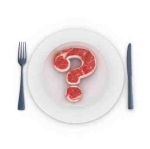I was planning on writing this week about recent critiques of alternative food networks, examining either when going local borders on the absurd, or legitimate concerns about the racialized aspect of food re-localization projects in the US presenting social justice issues, when I came across the latest issue of National Geographic. After reading their latest article in a special eight-month series exploring how we can increase food production to feed a predicted global population of 9 billion people by 2050, I changed my mind.
The article by Joel K. Bourne, Jr. discusses the motivations behind recent land grabs in Africa by big corporations and foreign governments, proposing that the fertile land in the world’s hungriest continent – with the right investments and agricultural innovations – could potentially become the next global breadbasket. While I am not enough of an expert in African agricultural production and local food system structures to venture a detailed criticism of the article, it is the broad, implicit premises that are its heart that I want to examine here. After all, the ways in which we define our problems – whether personal, local, or global – ultimately dictates the kinds of solutions that we see as available.
Writing about food production and hunger in Africa while sitting in my well-stocked apartment in Boulder, Colorado and possessing the buying power to frequent local grocery stores, restaurants, or indulge in delivery should that food supply run out or – as more often happens – start to bore my tastes, is a bit like walking into a verbal minefield. One wrong step, and I risk venturing from grounded critique into self-righteous rhapsodizing, indulging opinions that could in reality leave others starving while being continuously assured of my own access to food. However, the tacit approach to food production and the unquestioned role of corporations in defining the global food system embedded in the piece involves me as a consumer in a country whose food system is defined by the view of agriculture and crop production presented, and it is some of these assumptions that I want to call into question.
While I agree with the article’s conclusion – that the current state of food production and access in Africa is unacceptable – I do not agree with how it blithely and unquestionably portrays boosting production of 16 “key crops” and lowering the cost of chemical inputs as the obvious solution to Africa’s nutritional woes. In a glossy two-page map with graphs and figures, National Geographic demonstrates where yields are falling far short of potential and by how much, with the 16 key crops listed in ascending order of perceived importance:
- Rye
- Rapeseed
- Sugar beet
- Sunflower
- Soybean
- Potato
- Barley
- Groundnut
- Sugarcane
- Millet
- Wheat
- Rice
- Sorghum
- Cassava
- Oil Palm
- Corn
What struck me about this list is how it is dominated by crops that are destined for either animal feed or to be turned into processed food and the lack of crops with any real nutritional significance. While there are crops on the list with nutritional content (such as millet, groundnuts, barley, and wheat), it is the inclusion of commodity crops that are key ingredients for the nutritionally-empty processed food that increasingly dominate the global food system that needs to be questioned.
Achieving corn production potential is often portrayed as crucial to alleviating hunger and to a readership in the US accustomed to not questioning the endless acres of the grass across the middle swath of their own country, the suggestion of more corn may seem like a logical solution. What more corn means in the reality of the current food system is more processed goods with corn as their primary ingredient – food not grown directly for human consumption, but that needs to pass through an intermediary who transforms it into the form in which it is consumed. The same is essentially true of soybeans, sugarbeets, and sugarcane.
Increased corn and soybean production also means increased livestock production in industrialized farming operations, where the crops are used as feed to fatten the animals in a shorter amount of time than grass despite not being part of their natural die. The result is unhealthy animals that require high levels of antibiotics, and methane and waste problems from the concentration of large numbers of livestock in confined living spaces and not as part of a natural order where their waste is regenerated back into the system.
The inclusion of these four crops in the list of key crops for alleviating hunger in Africa made it clear that the goal was not so much to provide people access to nutritional food in an environmentally sustainable way as to foster the creation of a new population of consumers, and a substantially sized one at that. The author addresses this focus on profit toward the end of the article – and the way in which his focus jumps around a bit throughout makes one wonder how much an editor may have played with the paragraphs and chopped sentences to achieve a different overall message than originally intended – but the tacit underlying message that readers are not supposed to even notice, let alone question, remains, and it is with this premise that I fundamentally disagree: that the continued dominance of multinational corporations in food production is not to be questioned, and the presence of heavily processed foods as a key and growing part of an increasingly homogenized global diet inevitable.


